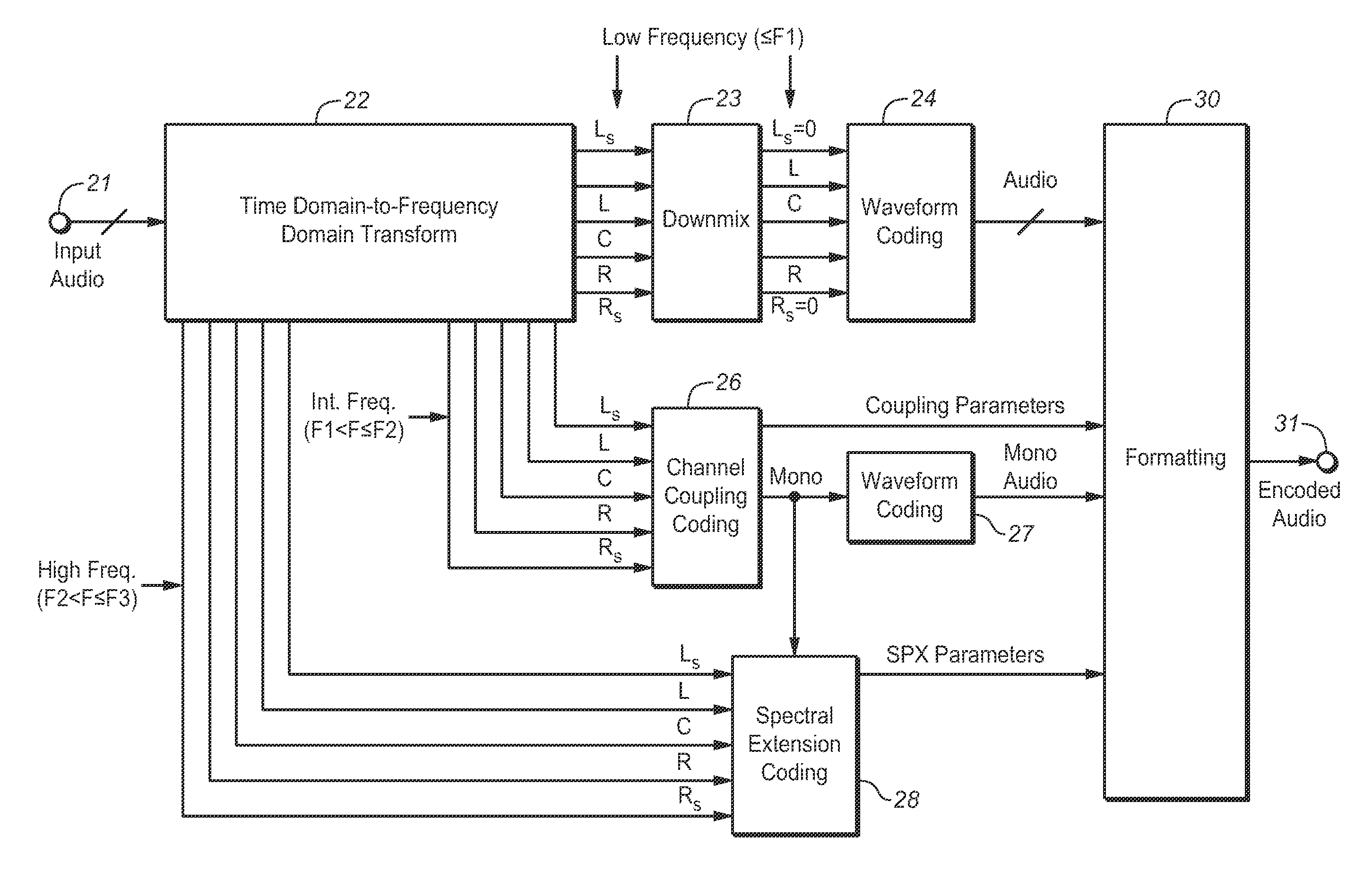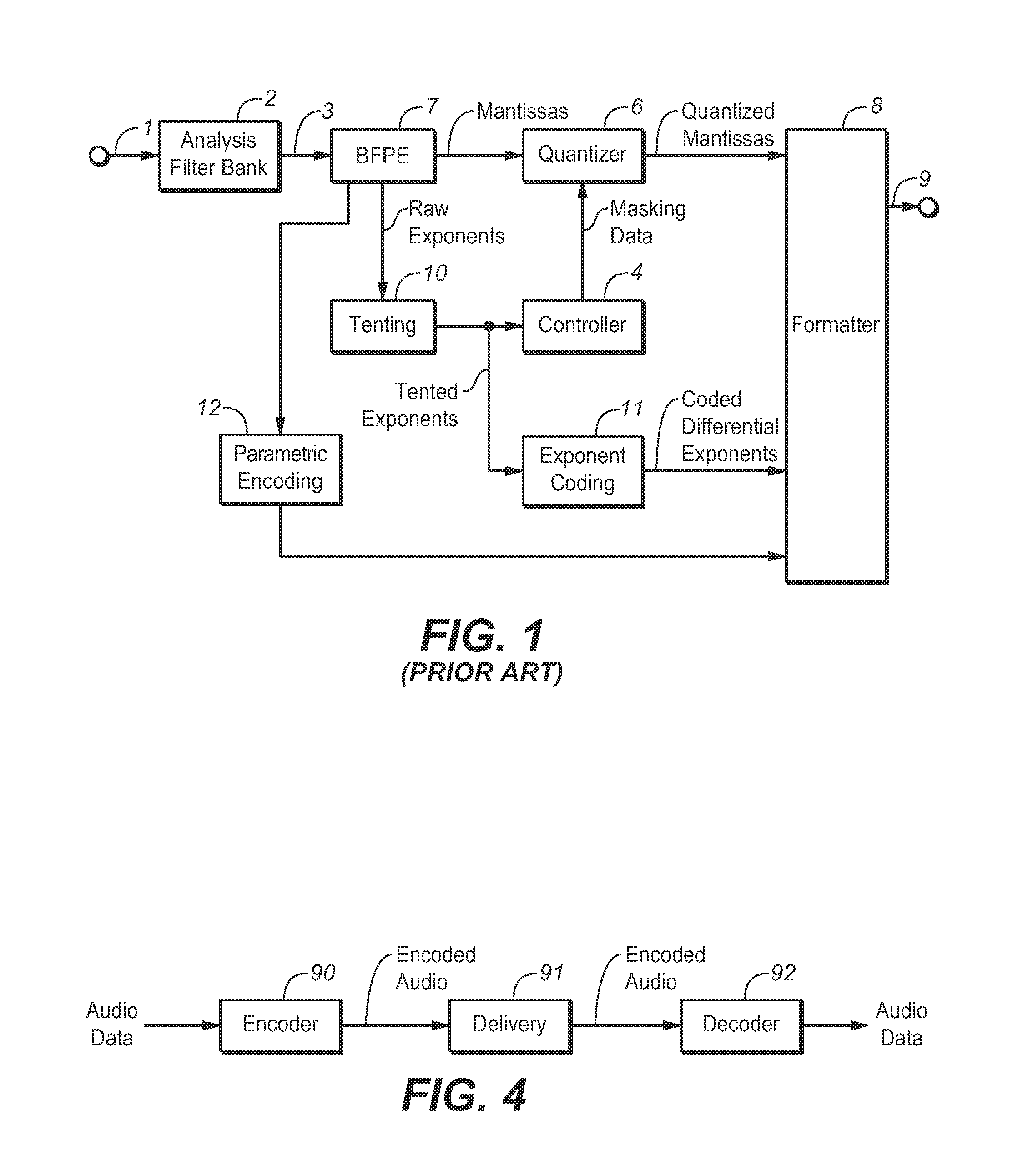Hybrid encoding of higher frequency and downmixed low frequency content of multichannel audio
a multi-channel audio and high-frequency technology, applied in the field of audio signal processing, can solve the problems of not producing “broadcast quality” encoded audio, kbps degrade, and the quality of the decoded version of the encoded output signal is rapidly degraded, so as to reduce the number of bits of the encoded output signal, reduce the number of bits, and minimize the effect of spatial collaps
- Summary
- Abstract
- Description
- Claims
- Application Information
AI Technical Summary
Benefits of technology
Problems solved by technology
Method used
Image
Examples
Embodiment Construction
[0043]An embodiment of the inventive coding method and a system configured to implement the method will be described with reference to FIG. 2. The system of FIG. 2 is an E-AC-3 encoder which is configured to generate an E-AC-3 encoded audio bitstream (31) in response to a multi-channel audio input signal (21). Signal 21 may be a “5.0 channel” time-domain signal comprising five full range channels of audio content.
[0044]The FIG. 2 system is also configured to generate E-AC-3 encoded audio bitstream 31 in response to a 5.1 channel audio input signal 21 comprising five full range channels and one low frequency effects (LFE) channel. The elements shown in FIG. 2 are capable of encoding the five full range input channels, and providing bits indicative of the encoded full range channels to formatting stage 30 for inclusion in the output bitstream 31. Conventional elements of the system for encoding the LFE channel (in a conventional manner) and providing bits indicative of the encoded LFE...
PUM
 Login to View More
Login to View More Abstract
Description
Claims
Application Information
 Login to View More
Login to View More - R&D
- Intellectual Property
- Life Sciences
- Materials
- Tech Scout
- Unparalleled Data Quality
- Higher Quality Content
- 60% Fewer Hallucinations
Browse by: Latest US Patents, China's latest patents, Technical Efficacy Thesaurus, Application Domain, Technology Topic, Popular Technical Reports.
© 2025 PatSnap. All rights reserved.Legal|Privacy policy|Modern Slavery Act Transparency Statement|Sitemap|About US| Contact US: help@patsnap.com



